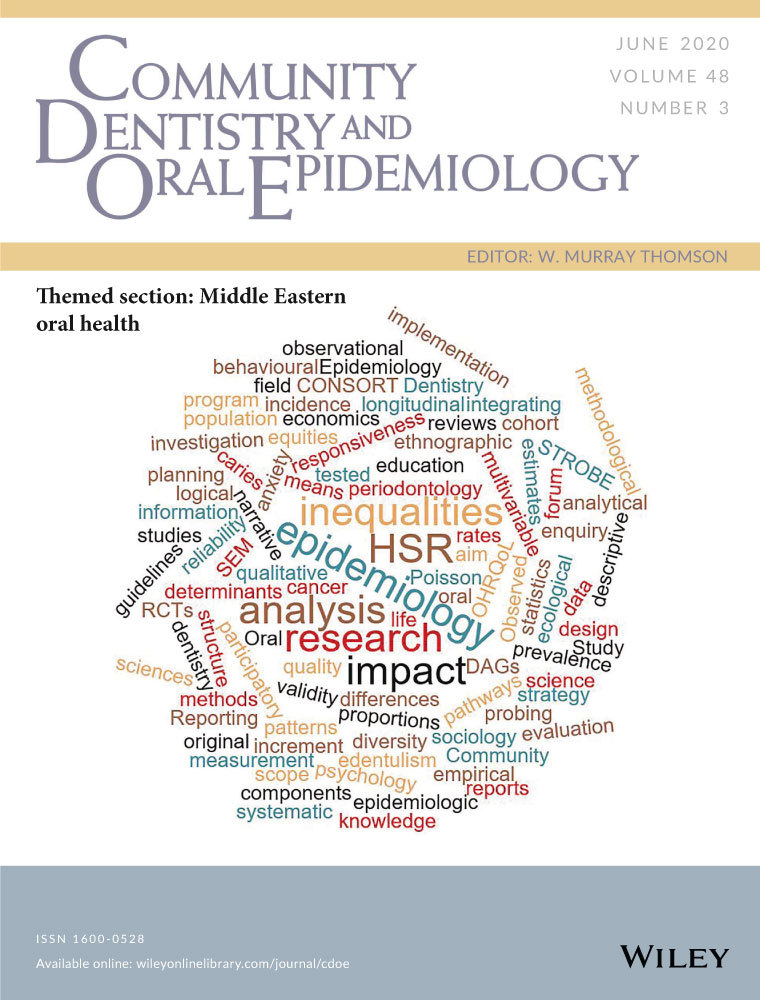Prevalence of third molars determined by panoramic radiographs in a population-based survey of adult Finns
Funding information
Field examinations were organized by the National Institute for Health and Welfare in Finland and partly funded by the Finnish Dental Society Apollonia, the Finnish Dental Association and Planmeca Oy.
Abstract
Objectives
The aim of the study was to examine the prevalence of third molars in panoramic radiographs in a population-based study of adults aged ≥30 years.
Methods
Out of a sample of 8028 inhabitants of Finland, selected with two-staged stratified cluster-sampling method for the Health 2000 Survey, 5989 participated in clinical oral examination and panoramic radiography. Mean age was 52.5 years (SD 14.6; range 30-97 years). The following variables were included in the analysis: participant characteristics, clinical number of all teeth, and radiographic prevalence and characteristics of third molars. Statistics included chi-squared, Fisher's exact, and Kruskal-Wallis tests and SAS-SUDAAN calculations.
Results
A total of 5912 third molars in 47.8% of the study population were recorded from panoramic radiographs. At least one impacted third molar was found in 21.9% of the study population. More than half (57.3%) of the remaining third molars were located in the mandible. A preponderance of participants with all third molars missing were observed in the oldest age group, women, those with lower education and those living in the countryside. Third molars or remnants thereof were observed radiographically in 3.9% of clinically edentulous study population.
Conclusions
The panoramic radiographs disclosed many remaining third molars in adult Finns aged ≥30 years. One-third of the third molars located impacted which may cause unexpected need for care.




